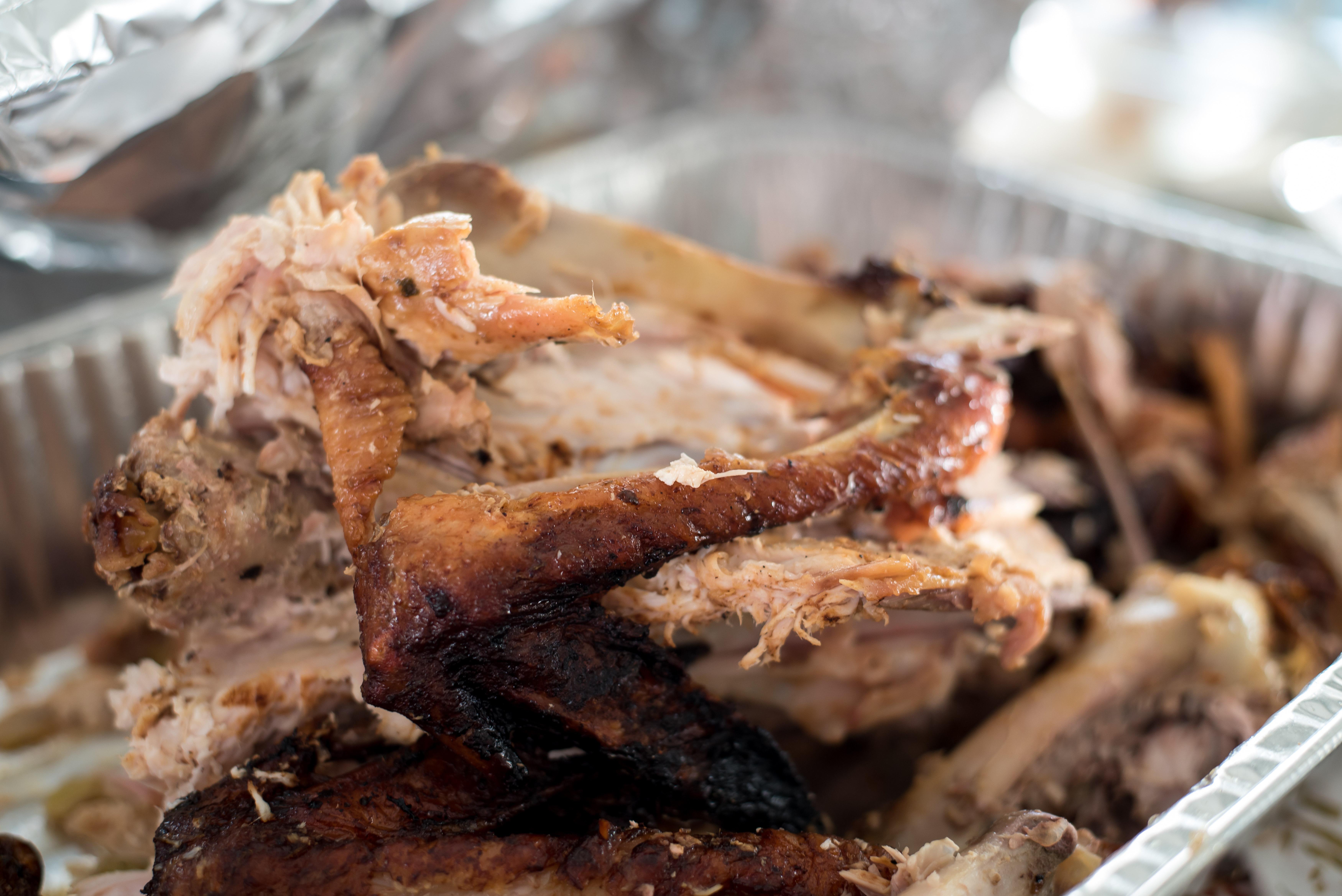
Food Allergies: The “Big 9”
A food allergy is a potentially serious response to consuming certain foods or food additives. For those who are sensitive, a reaction can occur within minutes or hours, and symptoms can range from mild to life-threatening. The nine leading causes of food allergies identified in the US are milk, eggs, fish, shellfish, tree nuts, peanuts, wheat, soybeans, and sesame. USDA’s Food Safety and Inspection Service (FSIS) and the U.S. Food and Drug Administration (FDA) both have laws requiring that all the ingredients in a food product be listed on the food label.
Frequently Asked Questions
A food allergy is a specific type of adverse food reaction involving the immune system. The body produces an immunoglobulin E (IgE), antibody in response to a food. An allergic reaction ensues once a specific food is ingested and binds with the IgE antibody. Most food allergies are caused by certain proteins.
According to the Centers for Disease Control and Prevention (CDC), food allergies are a growing food safety and public health concern that affects 6 % of adults and an estimated 8% of children in the United States. That’s 1 in 13 children, or about 2 students per classroom.
Food allergies are the leading cause of anaphylaxis, a sudden, severe and potentially life-threatening allergic reaction. Anaphylaxis can be caused by food allergies, insect stings, or medications.
Symptoms of food allergies typically appear within minutes or up to 2 hours after a person has eaten or has come into contact with the food to which they are allergic. Allergic reactions can include:
- Hives
- Flushed skin or rash
- Tingling or itchy sensation in the mouth
- Face, tongue, or lip swelling
- Vomiting and/or diarrhea
- Abdominal cramps
- Coughing or wheezing
- Dizziness and/or lightheadedness
- Swelling of the throat and vocal cords
- Difficulty breathing
- Drop in blood pressure
Persons with a known food allergy who begin experiencing symptoms while, or after, eating or coming into contact with a food should seek medical attention. In case of an emergency, please call 911 immediately.
Prompt administering epinephrine by an autoinjector (EpiPen) during the early symptoms of anaphylaxis may help prevent serious consequences.
If you or a loved one has food allergies, the best prevention is the strict avoidance of food allergens as there is no cure for food allergies. Some food allergies can be outgrown, and studies have shown that the severity of food allergies can change throughout a person’s life.
Learning how manage food allergens can help you minimize the risk of developing food allergies. Consider these tips:
- Always read ingredient label statements thoroughly even if you are familiar with the product or have bought it before;
- If a food product does not have an ingredient label, it is safest to avoid consuming it;
- If you are dining out, communicate your necessary accommodations to the server, restaurant manager or chef.
- If your child has food allergies, teach them which foods they should avoid and what they look like.
While more than 160 foods can cause allergic reactions in people with food allergies, the Food Allergen Labeling and Consumer Protection Act (FALCPA) of 2004 identified the eight most common allergenic foods. These eight foods account for 90 percent of food allergic reactions. They are milk, eggs, fish (such as bass, flounder, cod), crustacean shellfish (such as crab, lobster, shrimp), tree nuts (such as almonds, walnuts, pecans), peanuts, wheat and soybeans. In addition, the Food Allergy Safety, Treatment, Education and Research (FASTER) Act of 2021, declared sesame as a major food allergen. These nine foods, and any ingredient that contains protein derived from one or more of them, are designated as “major food allergens.”
Alpha-gal syndrome (AGS) is a serious, potentially life-threatening allergic condition that can occur after the consumption of red meat and products made by mammals (e.g., cow’s milk). AGS is associated with tick bites and primarily with the bite of the lone star tick in the United States, but other ticks have not been ruled out.
Alpha-gal is a sugar molecule found in animal protein such as beef, pork, lamb, rabbit, venison, etc., and products made from animals, including gelatin, cow’s milk and milk products. Alpha-gal is not found in the meat of poultry, such as chicken, turkey, duck or quail, eggs, fish and seafood.
AGS reactions can include hives or itchy rash, nausea or vomiting, heartburn or indigestion, diarrhea, cough, shortness of breath, or difficulty breathing, drop in blood pressure, swelling of the lips, throat, tongue, or eyelids, dizziness or faintness and severe stomach pain. Symptoms commonly appear 2-6 hours after consuming meat or dairy products or after exposure to products that contain alpha-gal. Reactions can differ from person to person and range from mild to severe or life-threatening.
AGS is diagnosed by an allergist or healthcare provider. Seek immediate care if you have a severe allergic reaction.
According to the National Institutes of Health, allergies to poultry meat are a distinct disorder with cross-reactivity among chicken, turkey, and other poultry. People with allergies to hen’s eggs may cross-react to other types of eggs (like duck and quail eggs) and poultry, especially chicken. While most people who are sensitive to eggs can eat chicken, one protein is present in both eggs and poultry that can cause allergies to both foods.
Some processed meat and poultry products (e.g., hot dogs, chicken nuggets, and canned soup) may be formulated with known allergenic ingredients, such as nonfat dry milk or hydrolyzed wheat protein, that must be listed in the ingredient statement. Therefore, consumers should carefully evaluate the ingredients statement on all meat and poultry products.
In addition to complete ingredient labeling, FSIS supports practices that promote accurate, informative product labeling, including voluntary statements on labels that alert people who have sensitivities or intolerances to the presence of specific ingredients. For example, a phrase such as “Contains: milk, wheat gluten, soy” has been allowed by the Agency on labeling immediately following the ingredients statement. Additionally, further clarification of the source of a specific ingredient in a parenthetical statement in the ingredients statement on labeling, e.g., “whey (from milk),” is encouraged as a means of informing consumers who may be alerted to a more recognizable term.
Some food ingredients can cause allergic reactions (e.g., soy protein concentrate and hydrolyzed wheat protein). In all cases, ingredients must be listed on the product label, in the ingredients statement in order by weight, from the greatest amount to the least.
Substances such as spices and spice extractives may be declared as “natural flavors,” “flavors,” or “natural flavoring” on meat and poultry labels without naming each one. This is because they are used primarily for their flavor contribution and not their nutritional contribution.
Federal regulations require all food products containing two or more ingredients to bear an ingredients statement listing all ingredients by common or usual name in descending order of predominance. Laws and regulations like FALCPA and FASTER Act make it easier for consumers to identify allergens in food. Reading food labels is the best way to know if the product you are buying contains allergens. Even if you have purchased the product many times before, always verify the labels, as ingredients can change.
Regulated allergens under FALCPA and the FASTER Act can be found in one of three ways:
- In the ingredient list, using the allergen’s common name;
- The label has “contains” word followed by the name of the major allergen (e.g., “Contains: milk”), or;
- In the ingredient list in parentheses, when the ingredient is a less common form of the allergen (e.g., “whey (milk)”).
The FALCPA and FASTER Act apply only to consumer-packaged foods regulated by the FDA. FDA regulates all foods except meat, poultry, and egg products, which are regulated by FSIS. While the above labeling declarations are not mandatory for FSIS products, FSIS encourages the use of these statements on a voluntary basis. FSIS requires that all ingredients, including those consisting of or containing major allergens, be declared by the common and usual name of the ingredient in the ingredient statements of product labeling.
FALCPA’s labeling requirements do not apply to the potential or unintentional presence of major food allergens in foods resulting from “cross-contact” situations during manufacturing, e.g., because of shared equipment or processing lines. In the context of food allergens, “cross-contact” occurs when a residue or trace amount of an allergenic food becomes incorporated into another food not intended to contain it. FDA guidance for the food industry states that food allergen advisory statements, e.g., “may contain [allergen]” or “produced in a facility that also uses [allergen],” should not be used as a substitute for adhering to current good manufacturing practices and must be truthful and not misleading. FDA is considering options for managing manufacturers’ use of these types of statements to inform consumers better.
In limited situations, FSIS labeling policies provide for the use of factual labeling statements about a product’s manufacturing environment, e.g., “produced in a plant that uses peanuts,” may be used where good manufacturing practices, and effective sanitation standard operating procedures, cannot reasonably eliminate the unintended presence of certain ingredients. For example, where chopped peanuts are used in making a dry Thai-style meat sauce mix, the necessity exists for a dry processing environment, and, thus, the production equipment cannot be washed with water or other fluids. In this instance, peanut dust may become airborne and unavoidably contaminate other meat or poultry products manufactured in the same production area.
No. The FALCPA and FASTER Act passed by Congress did not amend or implement regulations and policies for meat, poultry, and egg products in the acts related to them: the Federal Meat Inspection Act (FMIA), the Poultry Products Inspection Act (PPIA), and the Egg Products Inspection Act (EPIA). FSIS encourages the use of allergen statements, consistent with FALCPA, and other statements highlighting the presence or absence of ingredients of public health concern, particularly the “big nine” allergens. View the Agency’s compliance policy guide on the use of Allergens Labeling Statements.
Undeclared allergens in a meat or poultry product result in a product recall or a public health alert if the product is no longer in commerce. A product is misbranded under the FMIA, PPIA or EPIA when it contains ingredients that are permitted but are not declared on product labeling. FSIS routinely conducts recall effectiveness checks to verify recalling firms notify their customers of the recall and that steps are taken to make certain that the product is no longer available to consumers. For more information on recalls or to receive e-mail notification when recalls or public health alerts are issued, go to https://www.fsis.usda.gov/recalls.
Separate government agencies are responsible for protecting different segments of the food supply.
To report problems with meat, poultry or egg products, contact the USDA Meat and Poultry Hotline to reach a food safety specialist from 10 a.m. to 6 p.m. Eastern Time, or report the problem online.
- Call 1-888-MPHotline (1-888-674-6854)
- Email MPHotline@usda.gov
To report adverse reactions or other problems with FDA-regulated products (non-meat food products such as; cereals, fish, produce, juice, pastas, cheeses, etc.), call 1-888-SAFEFOOD (1-888-723-3366) or report the problem online.
For More Information
- American Academy of Allergy Asthma & Immunology
- Asthma and Allergy Foundation of America
- Eatright: The American Dietetic Association
- FDA-CFSAN Information about Food Allergens
- Food Allergy & Anaphylaxis Network,
To place an order for publications, call 800-929-4040. For questions, call 703-691-3179. - International Food Information Council Foundation
- National Institute of Allergy and Infectious Diseases
- MedicAlert
- Allergies and Food Intolerances



